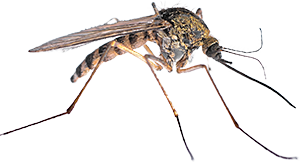In nearly every corner of the planet lurk creatures that will fill your heart with fear. Four-ton hippos in Botswana can chomp a person in half. Tigers in the forests of eastern Russia can shatter bone with one swipe of their massive paws. And the snakes—so many snakes! Cobras and vipers and mambas with venom so potent it can stop a human heartbeat in minutes.
But the most dangerous creature of all doesn’t have crushing jaws or ripping claws or fangs dripping with venom. In fact, you could kill this creature with a flick of your finger.
Creatures that will fill your heart with fear live in nearly every corner of the planet. In Botswana, four-ton hippos can chomp a person in half. Tigers in Russia can shatter bone with one swipe of their massive paws. And the snakes—so many snakes! Cobras, vipers, and mambas with venom so potent it can stop a human heartbeat in minutes.
But what’s the most dangerous creature? It doesn’t have crushing jaws, ripping claws, or fangs dripping with venom. You could kill this creature with a flick of your finger.




